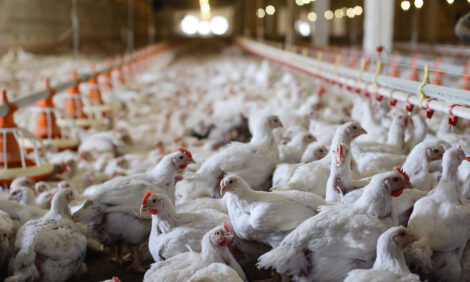



Antibiotic Resistance in Campylobacter Raises Concerns in Mexico
High levels of resistance to ciprofloxacin in Campylobacter found in chicken, pigs, cattle and children in Mexico preclude the use of fluoroquinolones for the treatment of human campylobacteriosis there, according to new research.In a paper to be published shortly in Foodborne Pathogens and Disease, Mussaret B. Zaidi of the Hospital General O'Horan in Mérida, Mexico, and co-authors there and with other institutions in Mexico as well as the US Food and Drug Administration describe the prevalence and antimicrobial susceptibility results for thermophilic Campylobacter isolates collected from humans, food and food-animals in an integrated food chain surveillance network in Mexico.
From 2003 to 2006, stool samples were collected from children with diarrhoea at state sentinel hospitals. Concurrently, faecal samples from asymptomatic children in kindergartens, as well as raw chicken, pork and beef from retail outlets and food-animal intestines from slaughterhouses were all collected in 65 cities from four different states.
C. jejuni was identified with a standardized hippurate test. Hippurate negative, indoxyl acetate positive isolates were classified as Campylobacter spp. Susceptibility testing was performed by agar dilution according to Clinical and Laboratory Standards Institute guidelines.
A total of 1,259 C. jejuni and 1,797 Campylobacter spp. isolates were recovered from 11,811 samples.
Chicken was significantly more contaminated for both intestinal samples (93.6 per cent) and meat products (58.3 per cent) than swine (71.4 per cent)/pork (14.6 per cent) samples and cattle (25.1 per cent)/beef (5.3 per cent) samples (p<0.001).
Campylobacter was recovered from 5.1 per cent of children with diarrhoea and from 3.2 per cent of asymptomatic children.
Chickens were significantly more likely to harbour ciprofloxacin-resistant C. jejuni (85.8 per cent) than swine (62.5 per cent, OR=3.6), cattle (39.8 per cent, OR=9.3) or humans (58.2 per cent, OR=4.4). No significant differences were found for ciprofloxacin-resistant Campylobacter spp. among food-animals but the rate in farm animals was significantly higher than in humans (84 per cent versus 56.7 per cent, OR=4.0).
Swine were significantly more likely to harbour erythromycin-resistant C. jejuni (14.8 per cent) than chicken (3.5 per cent, OR=4.9), cattle (1.8 per cent, OR=9.3) or humans (3.0 per cent, OR=5.7), and was associated with higher rates of erythromycin-resistant Campylobacter spp. (41.9 per cent) than chicken (10.5 per cent, OR=6.1) and humans (11.9 per cent, OR=5.3).
The high resistance rates to ciprofloxacin preclude the use of fluoroquinolones for the treatment of campylobacteriosis in Mexico, concluded the paper's authors.
Based on their results, Zaidi and co-authors emphasised the need for ongoing and integrated surveillance of antimicrobial usage and antimicrobial susceptibility in humans and animals.
Reference
Zaidi M.B., P.F. McDermott, F.D. Campos, R. Chim, M. Leon, G. Vazquez, G. Figueroa, E. Lopez, J. Contreras, and T. Estrada-Garcia. 2012. Antimicrobial-resistant Campylobacter in the food chain in Mexico. Foodborne Pathogens and Disease. -Not available-, ahead of print. doi:10.1089/fpd.2012.1127
Further ReadingYou can view the full report (fee payable) by clicking here. |
September 2012









